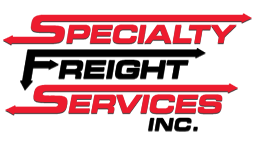German airline Lufthansa Group and chemical company BASF have introduced a groundbreaking innovation to their aircraft: sharkskin technology. This technology, named AeroSHARK, is a type of biomimicry that replicates sharkskin on an aircraft’s surface.
Why sharkskin?
Sharks’ skin is highly aerodynamic, as it decreases drag through its tooth-like scales, known as denticles, and allows sharks to efficiently move through the water.
By imitating these properties on the surface structure of a cargo plane, AeroSHARK reduces the frictional resistance of the aircraft as it moves through the air. This enhances fuel efficiency, which thereby reduces emissions from the aircraft. Lufthansa estimates that the technology can reduce drag by more than 1% – which would translate to annual savings of approximately 3,700 tons of kerosene and around 11,700 tons of CO2 emissions for an entire fleet of ten aircraft. The innovation therefore represents a step in the industry’s long journey to becoming carbon neutral.
Furthermore, the AeroSHARK coating is designed to be weather resistant, which can significantly improve aircraft performance as aircraft are constantly exposed to fluctuations in UV radiation, temperature and pressure that can alter flight smoothness.
Researchers have been studying the usage of sharkskin properties in aircraft surface design for several years. In late 2019, Lufthansa Group and BASF brought these findings to life by fitting 500 sq. meters of a Boeing 747-400 fuselage with jointly developed sharkskin surface. The modified aircraft, which was certified by EASA, demonstrated the technology’s significant savings potential on long-haul services during 1,500 hours of flight.
According to BASF, the modification was able to reduce emissions by approximately 0.8%. With the new 777 freighters being fitted with even greater square footage of sharkskin technology, the potential savings will be even higher, said BASF. In fact, early research shows that the use of this tech could eventually reduce CO2 emissions by as much as 3%.
Full commitment to sustainability
Lufthansa’s commitment to sustainability doesn’t just include sharkskin. As of early April, Lufthansa has also been regularly utilizing clean-burning fuel, metric tons of conventional kerosene from being burned made from biomass waste. Lufthansa’s cargo division plans to regularly offer greenhouse gas-neutral airfreight as a product for shippers.
Other sustainable avenues are being used to fully offset the greenhouse gases emitted during the manufacturing and transport of fuel, including reforestation projects.
Starting in 2022, Lufthansa Cargo will equip all Boeing 777 freighters with AeroSHARK. Lufthansa and BASF have stated that they will continue to develop this technology for additional types of aircraft, as well as larger surfaces, with the aim to help the entire industry move closer to carbon neutrality by 2050.
“We are proud that we will now be able to operate our entire freighter fleet even more efficiently in the future thanks to sharkskin technology and reduce the carbon footprint of our modern fleet further,” said Dorothea von Boxberg, CEO of Lufthansa Cargo. “The investments we have made in rolling out AeroSHARK at Lufthansa Cargo consciously reaffirm our commitment to the United Nation’s sustainable development goal on climate action.”


